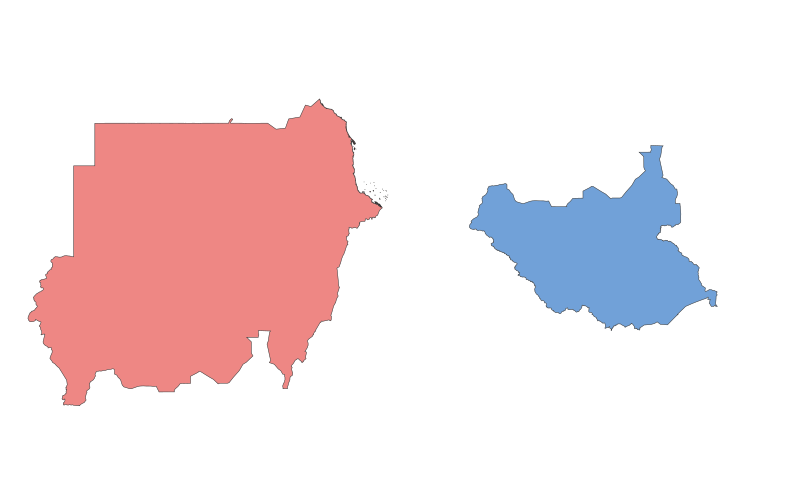Sudan vs. South Sudan: A Geographical Comparison

Comparison Table
| Category | Sudan | South Sudan |
|---|---|---|
| Location | Northeast Africa, bordered by Egypt, Eritrea, Ethiopia, South Sudan, Central African Republic, Chad, and Libya | East-Central Africa, bordered by Sudan, Ethiopia, Kenya, Uganda, Democratic Republic of the Congo, and Central African Republic |
| Size | 1,886,068 km² (largest in Africa before South Sudan's secession) | 619,745 km² |
| Climate | Arid and semi-arid; tropical in the south | Tropical with a rainy season (April–October) and dry season (November–March) |
| Natural Resources | Petroleum, gold, silver, chromite, uranium, iron ore | Petroleum, gold, silver, copper, iron ore, hydropower potential |
| Urban Development | Khartoum (capital) is a major urban center; other cities include Omdurman and Port Sudan | Juba (capital) is the largest city; urban development is limited due to recent independence and conflict |
| Transportation | Railroads, highways, and Nile River transport; major ports on the Red Sea | Limited infrastructure; reliance on roads and river transport (White Nile) |
Description
Sudan
Sudan, once the largest country in Africa, is located in the northeastern part of the continent. It has a diverse landscape ranging from the Sahara Desert in the north to the fertile Nile Valley and the savannas in the south. The country has a rich history, with ancient Nubian civilizations and later Islamic influences shaping its culture. Economically, Sudan relies heavily on agriculture, oil (though much was lost after South Sudan's secession), and mining. The capital, Khartoum, is a cultural and economic hub, while conflicts in regions like Darfur have impacted development.
South Sudan
South Sudan gained independence from Sudan in 2011 after decades of civil war, making it the world's youngest nation. Geographically, it is characterized by vast swamps, grasslands, and the White Nile. The country faces significant challenges, including underdeveloped infrastructure, political instability, and reliance on oil exports. Culturally, South Sudan is home to diverse ethnic groups, such as the Dinka and Nuer, with traditional pastoral lifestyles still prevalent. Despite its natural resource wealth, poverty and conflict have hindered economic growth.
Both nations share a complex history but have diverged significantly since South Sudan's independence, with Sudan focusing on rebuilding its economy and South Sudan struggling with nation-building and peace efforts.